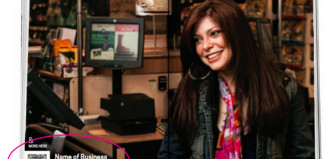Who comes up with these scenarios? It was interesting to listen as people piped up passionately. “Sight, of course.” “No, no, hearing. What about a world without music?” and on and on as each person defended his position. Like a merry-go-round on a triple espresso, we kept contemplating, disagreeing and sipping.
So the discussion got a little deeper. What happens to memory when there is only one sense and not the context of the usual suspects – sight, sound, taste, touch, smell? And what would happen if we were stripped of the sense we value the most, the one we take for granted, the one we rely on the most?
And then the conversation took a definitive right hook. What happens when we stop trusting our own senses even though we have full access to all of them? What happens when we put more trust in other people’s senses than in our own? We kept sipping.
I see it as a question of Punk Rock as applied to the wine world. It’s self-proclaimed elites vs. everyone else; it’s ready-to-wear vs. DIY (do-it-yourself); it’s top 40 vs. independent. Because the hypothetical question came up in a wine bar with everyone partaking, I saw an interesting correlation.
In the wine world there is more than a little demagoguery around the likes of certain writers, critics and magazines whose opinions seem to carry the weight of an emperor’s decree. But there are many other opposing and interesting viewpoints, ones that we come to from trusting our own senses and opinions, set in the context of our experiences. Wine is no different.
There are also those indy wine citizens who prefer to democratize and demystify the wine cult and take the words of the official “barons of taste” with a grain of salt. They trust their own senses and encourage everyone else to do so.
Here’s the skinny and a few options about how to consider it for yourself: There is a school of thought that there is something singularly objective about wine tasting; i.e. that you don’t need context to talk about it, enjoy it or drink too much of it.
In this world, the mighty point system reigns supreme and often the hundreds of thousands of great, interesting, non-standardized wines in the world don’t measure up, or never get rated, discussed or sensed. Instead of trusting our own palates, interests or propensities, a certain person or magazine gets to say what we should drink.
Then there are, for lack of a better description, the wine punks – people who see homogeneity as threatening and boring; people who prefer to let absolute opinions die on the vine; folks who prefer an interesting experience, self-selected, for any reason at all. In this group, using the individual senses is highly valued, and irreverence to the demagogues is OK.
I take the side of the punks and the DIY camp. There are myriad ways to tip the scales and turn the tide on wine tasting and wine rating. I like to think of it as a devil in a blue dress because this way you never know what you’re going to get and you often do not get what you expect.
Some thoughts on conducting an indy wine tasting:
Decide on a theme, a concept or a unifying idea for the wines you pick: You could group by varietal (the grape wines are made from), country of origin, wines with a cool label, the color, how much it reminds you of your favorite video game, wines from places in the U.S. you haven’t visited, Texas wines, wines made by female winemakers, wines that have screw tops, or wines that are guaranteed to get you a second date – or asked in for a night cap.
Dress up these wines in disguise. Put them in aluminum foil, brown bags, designer shopping bags, anything, just cover the label and level the playing field.
Develop your own tasting sheet or ratings system. Give your guests a way to relate to, talk about, have fun with and decide for themselves about the wines.
Don’t reveal the price. Price is not a direct indicator of quality. Consider having all the wines you serve be under a certain price, something that will be surprising when revealed, or have your guests guess the price based on their evaluations (and level of intoxication).
Use the senses – all of them. Get your memory, imagination and irreverence for the rules cranking from the beginning.
Here’s a possible checklist to work from in the sensory evaluation. I’ve taken the sommelier’s way of evaluating a wine, thrown it in the wash with hot water and bleach and reworked it here:
1. Sight. When the wine gets in the glass, what color is it? Does it look thick, thin, dark, light or medium? Does it make you want to take it home immediately, or do you have to try it on? Is it pretty or ugly? Is it a still or a sparkler? Does it have anything floating in it: cork, sediment, snacks from the earlier appetizers?
2. Smell. Is the wine OK to drink or do you have a goner? Is it fruity? What kind of fruit do you taste? (Just envision the Central Market produce isle.) Is there any sign of oak in the wine? Did someone get a splinter drinking it or is there no smell of wood on the wine at all? Are there any accessorizing flavors or add-ons? For instance, do you smell honey, leaves, mint, stone, alcohol (tell me you do)?
3. Taste. Here I have to say this is the place to let everything take a sensory beating. Encourage people to talk about and encounter tastes that they don’t have an association for yet, tastes that haven’t gotten in to their imagination and memory yet. Perhaps you could lead the discussion: “It tastes like a peppermint stick left too long on the Christmas tree,” or “It tastes like menthol cigarettes and bourbon,” or “It tastes like caramel apple pie,” and so on. What does the wine remind you of? Now that all the senses are working together, maybe you can elicit some comments in the form of metaphor: “It reminds me of my first date with … It reminds me of my meal at … It reminds me of … .”
4. Touch. Here is an often overlooked but fun sense for wine. Since wine has so many different weights and textures, you can talk about its finish, its start, or its length – is it heavy or light in your mouth and in your belly? Especially with dessert wines and ports, the thick or syrupy texture can be fun to associate and talk about.
So in the spirit of the new breed of designers, winemakers and inventors – those artisans who collage music, style and experiences – here is a toolbox for playing with the senses. Juxtapose your own interpretations in a context, maybe of the critics and guides and/or of your chosen tasters, the people sharing your table at Vino Vino, or wherever you imbibe. For me, I will always prefer the 128-box of Crayolas to the 24-pack, the one with multiple shades of blue. That way I can pick which hue works best for a devil in a blue dress!


































